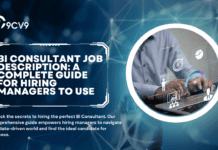Key Takeaways
- Digital transformation integrates cutting-edge technologies to enhance business operations, customer engagement, and data-driven decision-making.
- Successful digital transformation requires aligning technology with organizational goals, fostering a culture of innovation, and embracing agile methodologies.
- Organizations that embrace digital transformation can achieve increased efficiency, scalability, and a competitive advantage in today’s fast-evolving market.
In today’s fast-paced digital era, businesses across all sectors are under increasing pressure to adapt, innovate, and transform to stay relevant and competitive.
This urgency has given rise to a sweeping paradigm shift known as digital transformation—a term that has evolved from being a buzzword into a critical business imperative.
Digital transformation is no longer a futuristic concept; it is a present-day reality that is redefining how companies operate, deliver value to customers, and maintain a competitive edge in an increasingly technology-driven world.

At its core, digital transformation refers to the strategic integration of digital technologies into every aspect of a business. It goes far beyond simply digitizing existing processes or moving operations to the cloud.
Instead, it encompasses a complete cultural, operational, and technological evolution that reshapes business models, optimizes internal workflows, enhances customer experiences, and drives innovation through the intelligent use of data and advanced tools such as artificial intelligence, machine learning, big data, and the Internet of Things (IoT).
Whether it’s through adopting automation, enhancing customer interaction through digital channels, or leveraging data analytics to inform strategic decisions, digital transformation is reshaping industries at an unprecedented pace.
The necessity of digital transformation has only been amplified in recent years, especially in the wake of global events such as the COVID-19 pandemic, which accelerated digital adoption across various sectors.
Organizations that once hesitated to embrace digital change found themselves needing to pivot rapidly to remote work environments, implement digital customer service solutions, and adopt cloud-based technologies to ensure business continuity.
This sudden shift revealed a stark divide between digitally mature organizations and those that were still reliant on outdated systems, underscoring the importance of building resilient, agile, and scalable digital infrastructures.
Understanding how digital transformation works is crucial for businesses aiming to future-proof their operations.
It involves a structured, step-by-step approach starting from assessing the organization’s current digital maturity and identifying key transformation goals.
From there, businesses must develop a robust strategy that aligns with their long-term objectives, invest in the right technological solutions, and foster a culture of change that empowers employees to embrace new ways of working.
The process requires a balance of visionary leadership, strategic planning, and continuous innovation to truly unlock the potential of digital technologies.
As we move deeper into 2025 and beyond, digital transformation continues to be a central theme in corporate growth strategies, not just for large enterprises but also for small and medium-sized businesses seeking to thrive in a digital-first economy.
It is revolutionizing everything from customer engagement and product development to supply chain management and business intelligence. Companies that proactively embark on the digital transformation journey stand to gain significant advantages, including improved efficiency, enhanced customer satisfaction, and stronger competitive positioning.
This comprehensive guide explores what digital transformation is, delves into its core components, explains how the transformation process works, and highlights the key benefits, challenges, real-world examples, and future trends that business leaders must understand to succeed in today’s rapidly evolving digital landscape.
Before we venture further into this article, we would like to share who we are and what we do.
About 9cv9
9cv9 is a business tech startup based in Singapore and Asia, with a strong presence all over the world.
With over nine years of startup and business experience, and being highly involved in connecting with thousands of companies and startups, the 9cv9 team has listed some important learning points in this overview of What is Digital Transformation & How It Works.
If your company needs recruitment and headhunting services to hire top-quality employees, you can use 9cv9 headhunting and recruitment services to hire top talents and candidates. Find out more here, or send over an email to [email protected].
Or just post 1 free job posting here at 9cv9 Hiring Portal in under 10 minutes.
What is Digital Transformation & How It Works
- What is Digital Transformation?
- Core Components of Digital Transformation
- How Digital Transformation Works
- Benefits of Digital Transformation
- Challenges and Considerations
- Future Trends in Digital Transformation (2025 and Beyond)
- Tips for a Successful Digital Transformation Journey
1. What is Digital Transformation?
Digital transformation is a foundational shift in how organizations operate, deliver value to customers, and respond to market dynamics through the strategic adoption and integration of digital technologies. It is not merely a matter of digitizing paperwork or updating software—it is a holistic reimagining of business models, processes, and customer interactions in the digital age.
Understanding the Definition of Digital Transformation
- Strategic Integration of Digital Technologies
- Involves embedding technologies like AI, cloud computing, IoT, and data analytics into every business function.
- Aimed at improving efficiency, agility, innovation, and customer satisfaction.
- Organizational and Cultural Change
- Requires a shift in mindset at all levels of the organization.
- Encourages experimentation, agility, and data-driven decision-making.
- Continuous Business Evolution
- Not a one-time project but an ongoing process of innovation and adaptation.
- Companies must evolve their technology stack and business strategy regularly.
Key Characteristics of Digital Transformation
- Customer-Centric Approach
- Focuses on enhancing the customer experience through personalization and seamless digital interactions.
- Example: Banks offering mobile apps for 24/7 access to financial services.
- Data-Driven Decision Making
- Leverages real-time analytics and business intelligence to guide strategies.
- Example: Retail companies using predictive analytics to manage inventory and forecast demand.
- Cross-Departmental Collaboration
- Breaks down silos by encouraging integrated, tech-enabled workflows across departments.
- Technology-Enabled Innovation
- Encourages new digital products, platforms, and revenue streams.
- Example: Netflix transformed from DVD rentals to a data-driven streaming platform powered by AI recommendations.
How Digital Transformation Differs from Digitization and Digitalization
Digitization
- Definition: The process of converting analog data into digital form.
- Example: Scanning paper documents into PDF files.
- Scope: Narrow and technical in nature.
Digitalization
- Definition: Using digital technologies to improve existing processes.
- Example: Implementing digital signatures to speed up contract approvals.
- Scope: Operational, often limited to specific tasks or workflows.
Digital Transformation
- Definition: A strategic, enterprise-wide shift enabled by digital technologies.
- Example: A traditional retailer reimagining its business model to become an e-commerce-first brand with data-driven marketing and AI-powered logistics.
- Scope: Broad, strategic, and holistic.
Why Digital Transformation Matters in the Modern Business Landscape
- Enhanced Customer Expectations
- Modern consumers demand speed, convenience, and personalization.
- Example: Amazon’s “1-click” ordering and same-day delivery services.
- Increased Competitive Pressure
- Companies must innovate quickly or risk falling behind.
- Example: Traditional taxi companies struggled to compete with Uber’s app-based model.
- Disruption Across All Industries
- No industry is immune—from healthcare and finance to education and manufacturing.
- Example: Telemedicine platforms revolutionizing patient care in healthcare.
- Globalization and Remote Work
- Accelerated by events like the COVID-19 pandemic, digital transformation enables seamless remote collaboration and global service delivery.
Examples of Digital Transformation in Action
1. Retail: Walmart
- Invested heavily in e-commerce, mobile apps, and predictive analytics.
- Introduced contactless payment and AI for supply chain optimization.
- Competing effectively with digital-native rivals like Amazon.
2. Healthcare: Mayo Clinic
- Adopted AI-based diagnostics and virtual care platforms.
- Utilized patient portals and real-time data for enhanced decision-making.
- Improved patient engagement and treatment outcomes.
3. Banking: DBS Bank
- Transformed from a traditional bank to a digital-first bank in Asia.
- Developed mobile-first platforms, chatbots, and cloud-native services.
- Recognized globally for digital banking innovation.
4. Manufacturing: Siemens
- Implemented digital twins and IoT for smart manufacturing.
- Enabled real-time monitoring, predictive maintenance, and process automation.
5. Education: Coursera and edX
- Enabled global learners to access university-grade content through interactive platforms.
- Used AI to personalize learning paths and track progress.
Conclusion of This Section
Digital transformation is far more than a technological upgrade—it is a transformative journey that reshapes an organization’s core. It empowers businesses to unlock new opportunities, meet evolving customer demands, and stay ahead in an increasingly digital marketplace. Through real-world examples and a clear understanding of its components and implications, it is evident that digital transformation is not optional—it is essential for long-term survival and growth in the modern economy.
2. Core Components of Digital Transformation
Digital transformation is a multifaceted process composed of several interconnected components. These elements serve as foundational pillars that organizations must address to achieve a comprehensive and sustainable transformation. Understanding these core components allows business leaders to develop targeted strategies, allocate resources effectively, and drive measurable results across the enterprise.
1. Digital Technology Integration
Adopting Advanced Technologies
- Involves embedding cutting-edge technologies across business functions and customer touchpoints.
- Enables automation, data collection, real-time processing, and innovation.
Key Technologies Used
- Cloud Computing
- Offers scalability, flexibility, and cost efficiency.
- Example: Adobe migrated its creative suite to the cloud with Adobe Creative Cloud.
- Artificial Intelligence (AI) & Machine Learning (ML)
- Powers data analysis, automation, and intelligent decision-making.
- Example: Spotify uses AI to provide personalized playlists and recommendations.
- Internet of Things (IoT)
- Connects physical devices to collect and share real-time data.
- Example: GE uses IoT to optimize industrial operations with smart sensors.
- Blockchain
- Enhances security, transparency, and traceability in digital transactions.
- Example: IBM uses blockchain in supply chain solutions to increase trust.
- Robotic Process Automation (RPA)
- Automates repetitive tasks and increases operational efficiency.
- Example: Banks use RPA to automate KYC (Know Your Customer) verification.
2. Data and Analytics
Data as a Strategic Asset
- Central to informed decision-making and business intelligence.
- Helps organizations understand customer behavior, market trends, and internal performance.
Components of Data Transformation
- Data Collection & Integration
- Aggregates data from multiple sources (CRM, ERP, websites, social media).
- Big Data Platforms
- Enables real-time analytics and scalability.
- Example: Amazon leverages big data to optimize its supply chain and customer recommendations.
- Predictive Analytics
- Forecasts future trends and consumer behavior using historical data.
- Data Governance & Security
- Ensures compliance, quality, and protection of sensitive information.
- Example: Financial institutions adopt strict data governance to meet regulatory standards.
3. Customer Experience (CX) Enhancement
Customer-Centric Transformation
- Focuses on delivering seamless, personalized, and value-driven experiences across all digital and physical touchpoints.
CX-Related Innovations
- Omnichannel Communication
- Ensures consistent experiences across web, mobile, chat, and physical locations.
- Example: Starbucks offers a unified loyalty program across app, website, and stores.
- Personalization Engines
- Tailors content, services, and marketing based on user preferences.
- Example: Netflix uses personalization algorithms to boost engagement.
- Real-Time Customer Support
- Includes AI chatbots, virtual assistants, and self-service portals.
- Example: H&M uses AI chatbots to assist customers online 24/7.
4. Business Process Optimization
Reengineering Internal Workflows
- Streamlines and automates legacy processes for increased efficiency and agility.
- Focuses on reducing costs, eliminating redundancies, and accelerating outcomes.
Tools and Techniques
- Workflow Automation
- Digitizes approvals, data entry, and compliance tasks.
- Example: HR teams automate onboarding processes using cloud-based platforms.
- Agile Methodologies
- Supports iterative development and continuous improvement.
- Process Mining
- Uses data logs to identify inefficiencies and optimization opportunities.
- Digital Twin Technology
- Simulates real-world processes for monitoring and improvement.
- Example: Siemens uses digital twins for predictive maintenance in manufacturing.
5. Organizational and Cultural Change
Enabling a Digital-First Mindset
- A cultural shift is essential to embrace innovation, experimentation, and continuous learning.
Key Cultural Elements
- Leadership Commitment
- Digital transformation must be championed by top leadership.
- Example: Satya Nadella’s leadership transformed Microsoft’s culture to embrace the cloud and AI.
- Employee Empowerment
- Providing tools and training to enhance digital skills.
- Collaboration and Agility
- Encouraging cross-functional teamwork and rapid decision-making.
- Change Management Programs
- Structured initiatives to guide teams through digital adaptation.
6. Innovation and New Business Models
Rethinking Value Creation
- Digital transformation drives the development of new products, services, and revenue streams.
Examples of Digital-Driven Innovation
- Platform Economy
- Businesses shift to digital platforms that connect users and service providers.
- Example: Airbnb transformed the hospitality industry with a tech-enabled marketplace.
- Subscription Models
- Offering services on a recurring basis rather than one-time purchases.
- Example: Adobe moved from one-time software licenses to a subscription model.
- Ecosystem Expansion
- Partnering with other digital entities to co-create value.
- Example: Apple’s App Store ecosystem allows developers to contribute to its growth.
7. IT Modernization and Infrastructure
Upgrading Core Systems
- Ensures that the underlying technology infrastructure can support innovation and growth.
Modern IT Components
- Cloud Migration
- Moves workloads to public, private, or hybrid clouds.
- API Integration
- Allows systems to communicate and share data efficiently.
- Cybersecurity Enhancement
- Safeguards digital assets from increasing cyber threats.
- DevOps Adoption
- Promotes rapid, continuous software development and deployment.
8. Talent Development and Workforce Transformation
Investing in Human Capital
- Equipping teams with the skills needed to thrive in a digital environment.
Key Workforce Initiatives
- Upskilling and Reskilling Programs
- Focused on digital literacy, data analysis, and cloud technologies.
- Example: Amazon’s “Upskilling 2025” program trains employees for tech-focused roles.
- Hiring for Digital Roles
- Increased demand for data scientists, cloud architects, AI engineers, and UX designers.
- Remote Work Enablement
- Providing tools for secure, productive remote work environments.
Conclusion of This Section
Digital transformation is built upon a network of critical components that work cohesively to modernize operations, enhance value delivery, and ensure organizational sustainability. From technology adoption and customer experience to cultural realignment and workforce development, each component plays a vital role in shaping a resilient and future-ready enterprise. Companies that approach digital transformation holistically—rather than as isolated IT projects—are far more likely to achieve long-term success in today’s rapidly evolving digital economy.
3. How Digital Transformation Works
Digital transformation is not a one-time project but a continuous and strategic process that involves the integration of technology, innovation, and culture across every aspect of a business. To successfully implement digital transformation, organizations must follow a structured, step-by-step approach that aligns with their goals, market dynamics, and technological capabilities.
1. Assessing the Current State of the Business
Understanding Where the Organization Stands
- Evaluates existing processes, infrastructure, customer engagement strategies, and employee capabilities.
- Identifies digital maturity levels and areas of improvement.
Key Actions
- Digital Maturity Audit
- Analyze IT infrastructure, workflows, and digital tools in use.
- SWOT Analysis
- Identify strengths, weaknesses, opportunities, and threats related to digital capabilities.
- Stakeholder Feedback
- Collect insights from employees, customers, and partners to identify pain points and opportunities.
- Example: A retail chain may find outdated POS systems as a bottleneck, prompting the need for cloud-based replacements.
2. Defining a Clear Digital Transformation Strategy
Establishing a Roadmap for Change
- Involves setting clear objectives, KPIs, timelines, and resource allocations.
- Aligns digital initiatives with overall business goals.
Strategic Elements
- Vision Statement
- A forward-looking goal such as “Become a data-driven enterprise by 2026.”
- Prioritization of Projects
- Start with high-impact areas like customer experience, followed by backend automation.
- Budget Planning
- Allocate funds for technology, training, and process redesign.
- Example: DHL created a digital strategy to integrate smart logistics using IoT and AI-powered route optimization.
3. Gaining Leadership Buy-In and Aligning Organizational Culture
Driving Change from the Top
- Leadership plays a pivotal role in communicating vision and facilitating adoption.
- Encourages a culture of agility, experimentation, and continuous learning.
Cultural Actions
- Executive Sponsorship
- C-level executives lead by example to support change initiatives.
- Change Management Framework
- Guides employees through transitions with transparency and training.
- Internal Communication Campaigns
- Reinforce the purpose and benefits of digital transformation.
- Example: Microsoft’s cultural shift under Satya Nadella emphasized growth mindset and cloud-first principles.
4. Reimagining Business Models and Customer Experiences
Identifying New Value Opportunities
- Redefines how a business delivers value to customers through digital channels and services.
Innovative Shifts
- Digital Products & Services
- Develop new revenue streams such as subscription models or digital platforms.
- Customer Journey Mapping
- Redesign touchpoints to deliver seamless, omnichannel experiences.
- Example: Nike launched a mobile app and integrated RFID in-store experiences to create personalized shopping journeys.
5. Selecting and Implementing the Right Technologies
Building the Digital Backbone
- Selecting scalable, secure, and interoperable technologies that support transformation goals.
Technology Implementation
- Cloud Infrastructure
- Enables agility, scalability, and data centralization.
- Example: Netflix operates entirely on AWS cloud infrastructure.
- Enterprise Resource Planning (ERP) Systems
- Integrates finance, HR, supply chain, and operations.
- Example: SAP S/4HANA used by Siemens to streamline manufacturing.
- Customer Relationship Management (CRM) Tools
- Centralizes customer data for personalized engagement.
- Example: Salesforce helps Coca-Cola track consumer trends in real time.
- Cybersecurity Enhancements
- Ensures safe data usage and regulatory compliance.
6. Automating and Optimizing Core Business Processes
Improving Efficiency and Productivity
- Applies digital tools to redesign workflows, reduce manual work, and increase speed.
Process Improvement Tactics
- Robotic Process Automation (RPA)
- Automates repetitive tasks like invoicing or customer onboarding.
- Workflow Management Tools
- Standardizes and streamlines business operations.
- Lean & Agile Methodologies
- Enables faster iterations and cross-functional collaboration.
- Example: Banks use RPA to automate KYC processes, reducing turnaround time from days to minutes.
7. Building Data and Analytics Capabilities
Turning Data into Strategic Insight
- A robust data ecosystem fuels real-time decisions and innovation.
Analytics Framework
- Data Lakes and Warehouses
- Aggregate structured and unstructured data for analysis.
- Business Intelligence Dashboards
- Visualize key metrics for decision-makers.
- AI-Driven Predictive Analytics
- Anticipate market trends and customer behavior.
- Example: Uber uses real-time data analytics to match drivers with riders and optimize pricing.
8. Empowering the Workforce with Digital Skills
Developing Digital Talent
- Equipping employees with the knowledge and tools to operate effectively in a digital ecosystem.
Workforce Transformation
- Training & Certification Programs
- Upskill teams on digital literacy, data tools, and collaboration platforms.
- Digital Collaboration Tools
- Encourage real-time communication using platforms like Slack, Teams, or Zoom.
- Hiring for New Roles
- Attract talent such as data scientists, cybersecurity analysts, and cloud engineers.
- Example: AT&T invested $1 billion in reskilling its workforce for emerging tech roles.
9. Continuous Monitoring and Iteration
Ensuring Ongoing Success
- Digital transformation is a dynamic process requiring frequent evaluation and adaptation.
Review & Optimize
- Performance Tracking
- Use KPIs such as operational efficiency, customer satisfaction, and ROI.
- Feedback Loops
- Incorporate input from customers and staff to guide improvements.
- Scalability Testing
- Ensure solutions can grow with organizational needs.
- Example: Amazon continuously A/B tests its web and app interfaces to enhance user engagement.
10. Scaling and Innovating for the Future
Sustaining Competitive Advantage
- Once initial transformations are successful, businesses must expand and innovate further.
Long-Term Innovation
- Digital Ecosystem Partnerships
- Collaborate with startups, tech providers, and research institutions.
- Innovation Labs
- Foster experimentation and pilot new technologies.
- Global Scalability
- Expand digital practices to new markets or business units.
- Example: Google continuously invests in AI research and integrates findings into products like Search and Google Assistant.
Conclusion of This Section
Digital transformation is a strategic and iterative journey that redefines how businesses operate, deliver value, and remain competitive in a digital-first world. From assessing current capabilities to driving cultural change and embedding next-generation technologies, each phase builds upon the last to create a fully integrated digital enterprise. Organizations that approach transformation holistically and remain adaptable are best positioned to thrive amid disruption and innovation.
4. Benefits of Digital Transformation
Digital transformation delivers significant value across all facets of an organization—from operational efficiency and customer satisfaction to innovation and market competitiveness. By leveraging digital technologies, businesses can not only enhance performance but also future-proof themselves in an increasingly fast-paced digital landscape.
1. Improved Operational Efficiency
Streamlining Internal Processes
- Automation of Routine Tasks
- Reduces human error and manual intervention through RPA (Robotic Process Automation).
- Example: Insurance companies automate claims processing to cut down processing times from weeks to hours.
- Optimized Workflows
- Digitized workflows reduce redundancies and increase collaboration among teams.
- Cloud-Based Infrastructure
- Offers scalable and reliable IT resources without the complexity of physical hardware.
- Example: Netflix leverages cloud computing to support its vast content distribution without maintaining physical servers.
Faster Decision-Making
- Real-Time Data Access
- Allows leaders to make informed decisions based on up-to-date analytics.
- Integrated Systems
- ERP and CRM systems provide centralized data and unified insights across departments.
2. Enhanced Customer Experience
Personalization at Scale
- Customer Data Utilization
- Leverages behavioral data and purchase history for targeted recommendations.
- Example: Amazon uses machine learning to suggest products based on user preferences.
- Customizable User Interfaces
- Digital platforms provide users with tailored content and layouts.
Omnichannel Engagement
- Seamless Interactions Across Devices
- Unified experiences across mobile apps, websites, and in-person channels.
- 24/7 Customer Support
- AI chatbots and virtual assistants ensure round-the-clock service.
- Example: Banking apps offer instant support through AI-driven chatbots, improving service response times.
Reduced Customer Friction
- Digitized Onboarding Processes
- Simplified and fast account creation or product setup.
- Example: FinTech apps allow customers to open accounts in minutes using facial recognition and document scanning.
3. Increased Agility and Innovation
Faster Go-to-Market Strategies
- Digital Prototyping
- Enables quicker testing and validation of products.
- Agile Methodologies
- Supports incremental changes and faster product iterations.
Encouraging a Culture of Innovation
- Cross-Functional Collaboration
- Breaks down departmental silos and encourages idea sharing.
- Innovation Labs and Incubators
- Foster internal experimentation and rapid prototyping.
- Example: Google’s X Lab explores moonshot ideas like autonomous drones and smart contact lenses.
Adaptability to Market Changes
- Scalable Technologies
- Systems that adjust to growing or shifting business demands.
- Scenario Planning Tools
- Use predictive analytics to plan for economic, technological, or customer shifts.
4. Cost Reduction and Resource Optimization
Operational Cost Savings
- Reduced Manual Labor
- Automation leads to significant savings in operational and administrative functions.
- Energy-Efficient Infrastructure
- Cloud services and smart building systems reduce energy usage.
Better Allocation of Resources
- Predictive Maintenance
- IoT sensors monitor equipment and schedule maintenance only when needed.
- Example: Manufacturing plants use IoT devices to avoid unnecessary repairs and prevent downtime.
- Optimized Inventory Management
- Real-time tracking systems reduce overstocking or understocking.
5. Data-Driven Decision Making
Advanced Analytics and Insights
- Business Intelligence Dashboards
- Provide visualized data that helps interpret trends and outcomes.
- AI-Powered Forecasting
- Predict customer behavior, demand, and market trends.
- Example: Retailers use predictive analytics to forecast sales and plan promotions accordingly.
Performance Monitoring
- KPI Tracking Tools
- Enables continual measurement of goals and benchmarks.
- Employee Productivity Insights
- Software monitors and analyzes productivity to optimize workforce allocation.
6. Improved Employee Engagement and Productivity
Empowering the Workforce
- Digital Collaboration Platforms
- Tools like Slack, Microsoft Teams, and Zoom facilitate remote work and instant communication.
- Access to Real-Time Information
- Ensures employees can make fast and accurate decisions from any location.
Upskilling and Training
- E-learning Platforms
- Provide continuous training through interactive and on-demand modules.
- Example: AT&T launched a digital learning initiative to reskill over 100,000 employees.
Flexible Work Environment
- Remote Work Enablement
- Cloud solutions and secure networks allow employees to work from anywhere.
- Employee Satisfaction Tools
- Digital feedback systems help gauge and improve job satisfaction.
7. Greater Competitive Advantage
Market Differentiation
- Innovative Offerings
- Use of new technologies to create unique products or services.
- Example: Tesla differentiates itself through over-the-air software updates and AI-powered driving systems.
- Enhanced Brand Image
- Demonstrates innovation and customer-centricity, increasing brand loyalty.
Speed to Market
- Rapid Development Cycles
- Agile teams can launch updates or new products faster than traditional competitors.
Global Reach
- Digital Platforms and Ecommerce
- Allow businesses to expand beyond local markets without opening physical locations.
8. Strengthened Cybersecurity and Compliance
Modern Security Protocols
- End-to-End Encryption
- Secures customer data across devices and platforms.
- Advanced Authentication Systems
- Includes biometrics, two-factor authentication, and AI-based threat detection.
Regulatory Compliance
- Automated Compliance Tools
- Ensure adherence to data protection laws like GDPR or HIPAA.
- Audit Trails and Monitoring
- Maintain transparency and security in data access and usage.
9. Sustainable and Environmentally Friendly Operations
Eco-Friendly Digital Solutions
- Paperless Processes
- Digitizing paperwork reduces environmental waste.
- Smart Resource Management
- IoT-based systems control lighting, heating, and energy consumption in real time.
Remote Capabilities
- Reduced Carbon Footprint
- Fewer commutes and business travels lead to significant environmental savings.
- Example: Virtual meetings and cloud-based collaboration tools replaced thousands of annual corporate flights.
10. Long-Term Business Resilience
Disaster Recovery and Business Continuity
- Cloud Backups
- Ensure critical systems and data remain secure during outages.
- Remote Operations Readiness
- Digital tools allow businesses to operate from anywhere during crises.
Market Adaptability
- Scenario Simulation Tools
- Prepare for unexpected disruptions by running simulations.
- Diversification of Channels
- Enables companies to pivot quickly to digital sales or services.
- Example: During the COVID-19 pandemic, restaurants used mobile ordering platforms to stay operational.
Conclusion of This Section
Digital transformation delivers extensive benefits that touch every corner of an organization. From improving operational efficiency and enriching the customer experience to enhancing innovation, resilience, and environmental sustainability, the rewards are both immediate and long-lasting. Companies that embrace this evolution are not only better equipped to respond to disruption but also positioned to lead in their industries through data-driven insights, technological excellence, and forward-thinking strategies.
5. Challenges and Considerations
While digital transformation offers significant benefits, the journey is often complex and laden with strategic, technological, and organizational challenges. Successful digital transformation requires a thoughtful approach that addresses both technical barriers and cultural resistance. Below are the key challenges and critical considerations organizations must address during their transformation efforts.
1. Resistance to Change
Cultural and Organizational Inertia
- Employee Reluctance
- Fear of job displacement due to automation or AI tools.
- Hesitancy to adopt unfamiliar digital systems or workflows.
- Leadership Misalignment
- Lack of vision or conflicting priorities among top executives.
- Legacy Mindsets
- Long-standing habits and traditional operational models that clash with digital-first strategies.
- Example: Traditional manufacturing firms often resist IoT adoption due to lack of digital literacy among staff.
Mitigation Considerations
- Change Management Programs
- Invest in structured change management to guide transitions.
- Employee Involvement
- Involve employees in the planning phase to build ownership and reduce resistance.
- Leadership Advocacy
- Ensure executives serve as digital champions to promote organization-wide adoption.
2. Lack of Clear Digital Strategy
Unclear Goals and Metrics
- Undefined Transformation Objectives
- Many businesses initiate digital efforts without a clear end-goal.
- Lack of KPIs
- No structured framework to measure success or ROI.
Disjointed Initiatives
- Fragmented Technology Investments
- Adoption of disconnected tools that do not integrate with core systems.
- Departmental Silos
- Lack of cross-functional collaboration results in inconsistent implementation.
- Example: A retailer might adopt a customer-facing mobile app without integrating it with backend inventory systems.
Mitigation Considerations
- Strategic Roadmapping
- Develop long-term and short-term digital transformation plans.
- Defined Success Metrics
- Establish measurable KPIs aligned with business objectives.
- Unified Vision
- Ensure all departments are aligned with a centralized transformation strategy.
3. Legacy Systems and Technical Debt
Outdated Infrastructure
- Incompatible Technologies
- Legacy software often cannot support new digital platforms.
- Scalability Issues
- Inflexible systems hinder future upgrades and innovations.
- Security Risks
- Older systems may lack up-to-date security protocols.
- Example: Banks relying on COBOL-based mainframes face high costs and risks when migrating to modern cloud platforms.
Integration Challenges
- System Interoperability
- Difficulty in integrating legacy systems with new tools such as CRMs, ERPs, or AI platforms.
- Data Silos
- Disconnected data sets limit the effectiveness of analytics and automation.
Mitigation Considerations
- Incremental Modernization
- Gradually replace outdated systems through modular upgrades.
- API Gateways
- Use APIs to bridge the gap between old and new systems.
- Cloud Migration Planning
- Strategize phased migration to cloud infrastructure with minimal disruption.
4. High Implementation Costs
Capital Investment Requirements
- Upfront Technology Costs
- Procurement of new hardware, software, and platforms.
- Training and Upskilling
- Costs associated with educating the workforce on digital tools.
Uncertain ROI
- Delayed Payoffs
- Some digital initiatives may take months or years to yield measurable returns.
- Risk of Project Failure
- Poor planning or execution can result in sunk costs.
Mitigation Considerations
- Cost-Benefit Analysis
- Evaluate the potential ROI before large-scale investments.
- Pilot Programs
- Test solutions at a smaller scale before full implementation.
- Flexible Budgeting
- Allocate budgets that allow for ongoing updates and iterations.
5. Cybersecurity and Data Privacy Risks
Increased Vulnerability
- Expanded Digital Footprint
- More connected devices and endpoints increase attack surfaces.
- Cloud and IoT Risks
- Misconfigured cloud settings or unsecured IoT devices pose serious security threats.
- Example: A healthcare provider digitizing patient records must adhere to HIPAA standards while ensuring data encryption.
Compliance with Regulations
- Data Protection Laws
- Must comply with GDPR, CCPA, HIPAA, or industry-specific standards.
- Audit and Governance
- Lack of governance mechanisms can lead to non-compliance and legal consequences.
Mitigation Considerations
- Zero Trust Architecture
- Implement stringent access controls and continuous verification.
- Regular Audits
- Conduct security audits to identify and fix vulnerabilities.
- Data Encryption and Backup
- Encrypt sensitive data and maintain regular, secure backups.
6. Talent Gaps and Skill Shortages
Lack of Digital Skills
- Insufficient Technical Expertise
- Difficulty finding professionals skilled in AI, cloud, cybersecurity, and big data.
- Resistance to New Technologies
- Employees may be hesitant or slow to learn new systems.
Overdependence on External Vendors
- Loss of Internal Knowledge
- Relying on consultants may create knowledge gaps once they exit.
- Vendor Lock-In
- Getting tied to specific platforms limits future flexibility.
Mitigation Considerations
- Upskilling and Reskilling Initiatives
- Continuous learning programs to build in-house digital capabilities.
- Collaborations with Academia
- Partner with universities and training institutes to access emerging talent.
- Balanced Vendor Strategy
- Combine internal development with selective external support.
7. Data Management and Quality Issues
Data Silos and Inconsistencies
- Non-Standardized Data Formats
- Inconsistent data inputs from different systems hinder analytics.
- Incomplete or Duplicate Records
- Poor data hygiene affects decision-making and automation accuracy.
Difficulty in Real-Time Data Utilization
- Lag in Data Processing
- Slow processing pipelines fail to deliver real-time insights.
- Poor Data Governance
- Lack of ownership and standards for data quality.
Mitigation Considerations
- Data Governance Frameworks
- Define policies, roles, and responsibilities around data.
- Master Data Management (MDM)
- Ensure consistent and accurate data across all systems.
- Invest in Data Analytics Platforms
- Tools that clean, normalize, and visualize data efficiently.
8. Scalability and Sustainability Concerns
Platform Limitations
- Tools That Don’t Scale
- Initial solutions may not be equipped for enterprise-wide deployment.
- Infrastructure Bottlenecks
- Legacy or underpowered infrastructure can slow down progress.
Sustainability Issues
- Environmental Impact
- Digital expansion increases energy consumption if not optimized.
- Overreliance on Temporary Solutions
- “Quick fixes” may lack long-term viability or adaptability.
Mitigation Considerations
- Scalable Architecture
- Use modular and cloud-native systems that grow with the business.
- Sustainable IT Practices
- Adopt green data centers and energy-efficient devices.
9. Project Management and Execution Complexity
Poor Execution Strategies
- Lack of Milestones
- No defined checkpoints or progress markers.
- Ineffective Project Governance
- Absence of clear leadership and accountability.
Cross-Functional Misalignment
- Conflict of Priorities
- IT, marketing, sales, and operations may pursue separate goals.
- Communication Gaps
- Misunderstandings between technical and non-technical teams.
Mitigation Considerations
- Agile Methodologies
- Break down projects into manageable sprints with quick feedback loops.
- PMO (Project Management Office)
- Central governance unit to oversee digital transformation initiatives.
- Cross-Functional Teams
- Create hybrid teams to ensure alignment across departments.
Conclusion of This Section
Despite the vast advantages digital transformation offers, organizations must prepare for a wide array of challenges ranging from technological complexities and cybersecurity threats to employee resistance and strategic ambiguity. Navigating these hurdles requires a balanced combination of clear planning, skilled leadership, adaptable technologies, and a culture open to change. By proactively addressing these barriers, businesses can maximize the success and sustainability of their transformation journey.
6. Future Trends in Digital Transformation (2025 and Beyond)
As technology continues to evolve at a rapid pace, digital transformation is expected to reach new heights across industries. Future trends point to deeper integration of intelligent automation, immersive technologies, and sustainable innovations that will redefine business operations, customer engagement, and workforce dynamics. Businesses that anticipate and align with these trends will be better positioned to remain competitive and innovative.
1. Hyperautomation and Intelligent Process Automation
Advanced Workflow Automation
- Hyperautomation Defined
- A business-driven approach that combines AI, machine learning, robotic process automation (RPA), and other tools to automate end-to-end business processes.
- Beyond Routine Tasks
- Expands automation from simple repetitive tasks to more complex decision-making workflows.
- Example: Banks leveraging hyperautomation to streamline everything from customer onboarding to loan processing.
AI-Powered Decision Engines
- Contextual Intelligence
- AI systems that use real-time data to make dynamic decisions.
- Cognitive Automation
- Enables bots to understand, learn, and make decisions based on past behavior and predictive analytics.
2. Proliferation of Generative AI Across Business Functions
AI Content and Code Generation
- Marketing and Sales
- Use of AI to generate personalized content, email campaigns, and product descriptions at scale.
- Software Development
- Tools like GitHub Copilot or Amazon CodeWhisperer assisting developers in writing and optimizing code.
Conversational AI and Virtual Agents
- Enhanced Customer Support
- AI chatbots capable of understanding intent and sentiment.
- Example: Retailers deploying AI-powered virtual agents to handle thousands of customer queries simultaneously.
Operational AI for Business Insights
- Predictive Analytics
- Use of generative models to simulate business outcomes and optimize strategies.
- AI-Generated Reports
- Automated business intelligence dashboards and financial forecasts.
3. Cloud-Native Infrastructure and Edge Computing
Cloud-Native Architecture
- Microservices and Containerization
- Scalable, resilient infrastructure that supports agile deployment.
- Multi-Cloud Strategies
- Reduces dependency on a single vendor while improving performance and redundancy.
Edge Computing Expansion
- Data Processing at the Source
- Reduces latency and bandwidth use by processing data near the origin point (IoT devices, sensors, etc.).
- Example: Smart factories using edge computing to monitor and adjust machinery operations in real time.
Serverless Technologies
- Pay-As-You-Go Models
- Businesses only pay for actual compute usage, reducing operational costs.
- Real-Time Scalability
- Automatic scaling based on traffic and processing demands.
4. Immersive Technologies: AR, VR, and the Metaverse
Augmented Reality (AR) in Enterprise Operations
- Field Service and Maintenance
- AR headsets used by technicians for real-time guidance.
- Example: Manufacturing firms using AR to provide remote assistance and equipment diagnostics.
Virtual Reality (VR) for Training and Simulation
- Immersive Learning
- VR platforms for employee training, compliance programs, and soft skills development.
- Example: Healthcare institutions simulating surgeries for medical trainees.
Metaverse Integration
- Virtual Collaboration Spaces
- Digital workspaces where remote teams collaborate using avatars and immersive interfaces.
- Digital Twin Technology
- Real-time digital replicas of physical assets used in planning and performance monitoring.
5. Cybersecurity Evolution and Zero Trust Architectures
Zero Trust Security Models
- Trust Nothing, Verify Everything
- Strict identity verification before granting access to systems and data.
- Granular Access Controls
- Ensures users only access information necessary for their role.
AI-Driven Threat Detection
- Predictive Cybersecurity
- Use of AI to identify potential vulnerabilities before they’re exploited.
- Behavioral Biometrics
- Enhancing identity verification through real-time behavioral monitoring.
Post-Quantum Cryptography (PQC)
- Future-Proof Encryption
- Development of cryptographic algorithms resistant to quantum computing threats.
6. Sustainable Digital Transformation (Green IT)
Eco-Friendly Infrastructure
- Energy-Efficient Data Centers
- Companies investing in sustainable cloud providers that use renewable energy sources.
- Example: Google and Microsoft committing to carbon-negative operations.
Green Software Development
- Carbon-Aware Algorithms
- Writing code that minimizes energy consumption during execution.
- Sustainable Design Principles
- Optimizing software to reduce CPU usage, storage, and network bandwidth.
ESG (Environmental, Social, Governance) Integration
- Digital Tools for Sustainability Monitoring
- Platforms that track emissions, energy usage, and social impact in real time.
7. Democratization of Technology Through Low-Code and No-Code Platforms
Citizen Development
- Empowering Non-Tech Users
- Enables business users to build applications without deep programming knowledge.
- Example: HR teams creating internal workflow automation tools using low-code platforms like OutSystems or Mendix.
Accelerated Innovation Cycles
- Faster Prototyping
- Reduces time-to-market for digital solutions.
- Reduced Developer Workload
- Frees up technical staff to focus on complex challenges.
Integration with AI and Automation
- AI-Enabled Builders
- AI tools embedded in low-code platforms to suggest design patterns or auto-generate logic.
8. Data-Driven Ecosystems and Real-Time Intelligence
Real-Time Analytics and Decision-Making
- Data Lakes and Unified Dashboards
- Centralized repositories for structured and unstructured data.
- Event-Driven Architectures
- Systems that respond to real-time data events (e.g., stock level updates triggering automated procurement).
AI + Data Integration
- Prescriptive Insights
- AI systems recommending specific actions based on data patterns.
- Predictive Maintenance
- Example: Airlines using real-time sensor data to predict aircraft part failures before they occur.
Customer Data Platforms (CDPs)
- Unified Customer View
- Aggregates data from all touchpoints to provide a complete customer profile.
- Hyper-Personalization
- Real-time targeting and content delivery based on customer behavior and preferences.
9. Workforce Transformation and Human-AI Collaboration
Digital Skills Development
- AI-Augmented Training
- Personalized learning paths based on employee performance data.
- Upskilling for Automation
- Focus on reskilling workers for roles in digital product management, data science, and cybersecurity.
AI as a Co-Worker
- Decision Support Systems
- AI assisting professionals in legal, healthcare, and finance sectors by providing data-driven insights.
- AI-Powered Assistants
- Smart assistants that help with scheduling, communication, and task prioritization.
Flexible Work Models
- Hybrid Workplaces
- Tech-powered flexibility enabling remote and in-office collaboration.
- Example: Companies using digital whiteboards and asynchronous communication tools to manage distributed teams.
10. Industry-Specific Digital Innovation
Healthcare
- Digital Therapeutics and Telehealth
- Remote patient monitoring, AI diagnostics, and personalized treatment plans.
- Example: AI tools analyzing patient vitals in real-time to detect early signs of chronic diseases.
Retail
- Omnichannel Customer Experiences
- Seamless integration of in-store, online, and mobile channels.
- Smart Inventory Management
- AI predicting demand trends to optimize stock levels.
Manufacturing
- Smart Factories
- Integration of IoT, AI, and robotics to drive autonomous production.
- Predictive Quality Control
- Real-time quality monitoring to reduce defects and improve efficiency.
Finance
- Blockchain and Smart Contracts
- Streamlined, secure transactions without intermediaries.
- AI Fraud Detection
- Real-time pattern recognition to identify and block fraudulent activity.
Conclusion of This Section
The future of digital transformation in 2025 and beyond will be defined by advanced automation, personalized experiences, sustainable innovation, and the blending of physical and digital worlds. Organizations that stay ahead of these emerging trends and adapt their strategies accordingly will not only remain competitive but will also set new benchmarks for customer value, operational efficiency, and business agility in the digital age.
7. Tips for a Successful Digital Transformation Journey
Embarking on a digital transformation journey is a complex and long-term endeavor that requires strategic vision, leadership commitment, and cross-functional collaboration. Organizations must adopt a holistic approach that goes beyond technology upgrades to include cultural shifts, change management, and data-driven decision-making. The following actionable tips are essential for ensuring a smooth and impactful digital transformation process.
1. Define a Clear Vision and Strategy
Establish Strategic Objectives
- Clearly outline what the business aims to achieve through digital transformation.
- Align transformation goals with broader business objectives such as revenue growth, customer satisfaction, or operational efficiency.
- Example: A retail chain aiming to enhance customer experience by integrating e-commerce, in-store apps, and real-time inventory tracking.
Secure Executive Sponsorship
- Ensure that top-level leaders champion the transformation process.
- Executives must actively participate in strategy formulation, resource allocation, and change advocacy.
Set Measurable KPIs
- Define specific key performance indicators (KPIs) to measure progress and impact.
- Include both short-term and long-term metrics such as system uptime, customer acquisition costs, or employee productivity.
2. Build a Digitally-Ready Culture
Promote a Culture of Innovation
- Encourage experimentation, creativity, and openness to change.
- Recognize and reward employees who contribute to digital innovation.
Empower Teams with Autonomy
- Enable departments to propose and implement tech solutions tailored to their needs.
- Foster collaboration across departments to avoid silos.
Lead with Change Management
- Prepare employees for the shift by communicating the “why” behind the transformation.
- Offer training, workshops, and town hall meetings to ease anxiety and increase buy-in.
3. Focus on Customer-Centric Transformation
Map the Customer Journey
- Use data and customer feedback to identify pain points and opportunities.
- Design digital solutions that simplify, personalize, and enhance the customer experience.
Leverage Omnichannel Strategies
- Ensure seamless integration across online, mobile, and offline touchpoints.
- Example: Banks offering unified customer service across mobile apps, ATMs, and customer care centers.
Continuously Gather and Act on Feedback
- Implement digital tools like customer satisfaction surveys, live chats, and social listening.
- Use insights to iterate and improve services in real time.
4. Invest in Scalable and Agile Technology Infrastructure
Adopt Cloud-First or Hybrid Cloud Approaches
- Enables greater flexibility, cost control, and scalability.
- Supports remote work and real-time collaboration across geographies.
Implement Microservices Architecture
- Break down applications into independent modules that can be updated or replaced without affecting the whole system.
Utilize APIs and Integration Platforms
- Ensure interoperability between legacy systems and modern applications.
- Example: Healthcare providers integrating electronic health records (EHR) with mobile telemedicine apps through secure APIs.
5. Prioritize Data Strategy and Governance
Create a Unified Data Architecture
- Consolidate data silos to enable enterprise-wide analytics and insights.
- Deploy data lakes or data warehouses for centralized storage.
Ensure Data Quality and Accuracy
- Implement data cleaning, validation, and enrichment processes.
- Use master data management (MDM) to maintain consistency.
Focus on Compliance and Security
- Adhere to regulations such as GDPR, HIPAA, or CCPA.
- Establish data governance frameworks and assign data stewards.
6. Upskill and Reskill the Workforce
Conduct Skill Gap Assessments
- Identify current capabilities versus skills needed for future roles.
- Tailor training programs to specific departments or job functions.
Provide Continuous Learning Opportunities
- Offer certifications in areas like AI, data analytics, cybersecurity, and cloud computing.
- Example: A logistics company training its operations team in data visualization tools like Power BI or Tableau.
Leverage Digital Learning Platforms
- Use LMS (Learning Management Systems) and e-learning modules for scalable training delivery.
- Promote peer learning through internal webinars or knowledge-sharing sessions.
7. Start Small, Scale Fast
Begin with Pilot Projects
- Select low-risk, high-impact areas to test digital initiatives.
- Use results to refine processes and technologies before large-scale deployment.
Celebrate Quick Wins
- Showcase early successes to build momentum and stakeholder confidence.
- Example: An insurance firm starting with chatbot implementation to reduce customer service call volumes.
Use Agile Methodologies
- Break projects into sprints or phases for faster iteration.
- Regularly assess progress and adapt based on feedback.
8. Partner with the Right Technology Providers
Evaluate Vendors Based on Long-Term Value
- Look for partners that offer scalable solutions, regular updates, and strong customer support.
- Assess their experience in your specific industry or use case.
Ensure Flexibility and Customization
- Avoid rigid platforms that do not allow for tailored configurations.
- Example: Choosing a CRM provider that allows modular integrations and multilingual support.
Collaborate on Co-Innovation
- Work closely with technology partners to co-create new products or services.
- Example: Automotive firms partnering with AI startups to develop smart navigation systems.
9. Foster Cross-Functional Collaboration
Break Down Departmental Silos
- Encourage communication and alignment between IT, marketing, finance, HR, and operations.
- Form digital transformation task forces or committees with representatives from multiple functions.
Use Collaboration Tools
- Implement platforms like Microsoft Teams, Slack, or Notion to facilitate knowledge sharing and project tracking.
Align Incentives Across Teams
- Tie transformation success to individual and departmental performance metrics.
10. Continuously Monitor, Adapt, and Optimize
Set Up Real-Time Dashboards
- Use analytics platforms to track KPIs, system performance, and customer engagement in real time.
Conduct Regular Review Meetings
- Schedule monthly or quarterly reviews to assess progress and identify bottlenecks.
Be Willing to Pivot
- Stay responsive to market changes, customer demands, and emerging technologies.
- Example: Retailers pivoting to curbside pickup models in response to pandemic-related disruptions.
Conclusion of This Section
A successful digital transformation journey requires more than just investing in new technologies—it demands a comprehensive, people-first strategy that aligns with business goals, embraces change, and fosters innovation across the organization. By following these proven tips and learning from real-world examples, companies can navigate the complexities of digital transformation with confidence, drive long-term growth, and create meaningful value for their customers and employees.
Conclusion
Digital transformation is no longer a forward-looking concept reserved for tech-driven startups or large enterprises—it is now a critical strategic priority for organizations across all industries. As the global business environment continues to evolve, driven by fast-paced technological innovation, shifting customer expectations, and intensified competition, companies must adopt digital transformation not as a one-time project, but as a continuous journey of improvement and reinvention.
At its core, digital transformation involves the intelligent integration of digital technologies into every aspect of a business, reshaping how it operates, delivers value to customers, and responds to changing market dynamics. It extends beyond adopting new tools or platforms. It requires a shift in organizational culture, a rethinking of business models, and a firm commitment to data-driven decision-making, customer-centric experiences, and operational agility.
Key Takeaways from the Digital Transformation Journey
- It is a Strategic Imperative: Businesses must align digital transformation initiatives with broader organizational goals, whether to improve customer satisfaction, enhance internal efficiency, or gain a competitive edge.
- Technology is Just One Component: While emerging technologies like AI, machine learning, IoT, and cloud computing play a crucial role, transformation also demands robust change management, employee upskilling, and leadership alignment.
- Customer-Centricity is the Driving Force: Digital transformation empowers businesses to better understand and serve their customers through personalized experiences, real-time interactions, and seamless omnichannel support.
- Agility and Scalability Matter: Companies that adopt agile methodologies and scalable infrastructures are more capable of adapting to change and accelerating innovation.
- Success Requires a Holistic Approach: From culture and people to processes and platforms, each component must work in harmony to deliver long-term transformation success.
The Road Ahead: Preparing for the Future of Business
Looking ahead to 2025 and beyond, the future of digital transformation will be shaped by even more intelligent automation, predictive analytics, hyper-personalization, and industry-specific innovations. Businesses that proactively invest in emerging technologies and stay attuned to evolving customer behaviors will be better positioned to lead in their respective markets.
For example:
- Manufacturing firms that implement AI-driven supply chain optimization tools will see improved inventory accuracy and cost reduction.
- Healthcare providers adopting digital patient engagement platforms will deliver faster, more accessible care.
- Financial institutions leveraging blockchain and digital identity solutions will boost transparency and trust with clients.
Organizations that delay or underinvest in digital transformation risk falling behind in efficiency, innovation, and customer satisfaction. In contrast, those that embrace transformation holistically—backed by strong leadership, a digital-first mindset, and an agile culture—will unlock new revenue streams, enhance brand loyalty, and secure sustainable growth.
Final Thought: Make Digital Transformation a Competitive Advantage
Digital transformation is not about chasing trends—it is about building long-term resilience, unlocking value across every function, and becoming a truly modern enterprise capable of thriving in uncertainty. The most successful digital transformations are led by visionary leaders who view change not as a threat, but as an opportunity to reinvent their organizations for the digital age.
Whether your organization is just beginning its transformation journey or looking to accelerate ongoing efforts, the time to act is now. Embrace the principles, strategies, and technologies that fuel digital transformation, and position your business as a forward-thinking, future-ready leader in the digital economy.
If you find this article useful, why not share it with your hiring manager and C-level suite friends and also leave a nice comment below?
We, at the 9cv9 Research Team, strive to bring the latest and most meaningful data, guides, and statistics to your doorstep.
To get access to top-quality guides, click over to 9cv9 Blog.
People Also Ask
What is digital transformation?
Digital transformation refers to integrating digital technologies into all areas of a business to improve processes, enhance customer experiences, and drive innovation.
Why is digital transformation important for businesses?
It enables businesses to stay competitive by improving operational efficiency, adapting to market changes, and delivering better customer experiences.
How does digital transformation work in a business?
It involves adopting new technologies, rethinking business models, and fostering a culture of innovation across all departments, ultimately improving business operations and customer interaction.
What are the key components of digital transformation?
The main components include technology integration, process automation, data analytics, and changes in organizational culture to support innovation and continuous improvement.
What is the role of technology in digital transformation?
Technology drives the transformation by enabling automation, data analysis, communication, and the seamless integration of systems across different business functions.
How do companies get started with digital transformation?
Start by assessing current business processes, identifying areas for improvement, selecting the right technologies, and involving key stakeholders in developing a strategic plan.
What are the benefits of digital transformation?
It enhances operational efficiency, improves customer experiences, supports innovation, fosters better decision-making, and helps businesses stay competitive in the digital age.
What are the challenges of digital transformation?
Challenges include resistance to change, insufficient digital skills, high implementation costs, security concerns, and the need for continuous investment in technology.
What industries are most affected by digital transformation?
Industries such as healthcare, finance, retail, manufacturing, and education are significantly impacted, with technology improving everything from customer interaction to operational processes.
How does digital transformation improve customer experience?
By leveraging technologies like AI, data analytics, and automation, businesses can deliver personalized, seamless, and efficient experiences, increasing customer satisfaction.
What is the difference between digital transformation and digitalization?
Digital transformation is a broader, more strategic process that includes digitalization, which refers to the adoption of digital tools for specific tasks or processes within a business.
How long does it take to complete a digital transformation?
The timeline varies depending on the organization’s size, industry, and scope of transformation, but it can take months or even years to fully implement.
Is digital transformation the same as IT modernization?
No, IT modernization focuses on updating technology infrastructure, while digital transformation involves changing business models, processes, and culture, using technology as an enabler.
How does digital transformation impact business operations?
It streamlines processes, enhances collaboration, enables real-time data analysis, and improves decision-making, ultimately leading to increased efficiency and productivity.
What is the role of data in digital transformation?
Data is crucial as it helps businesses make informed decisions, track performance, and personalize customer interactions, driving business growth and innovation.
How do you measure the success of digital transformation?
Success can be measured through improved operational performance, customer satisfaction, increased revenue, cost reduction, and the achievement of strategic business goals.
How can small businesses benefit from digital transformation?
Small businesses can increase efficiency, enhance customer engagement, and compete with larger companies by leveraging cost-effective digital tools for marketing, sales, and customer service.
What technologies are involved in digital transformation?
Technologies such as cloud computing, artificial intelligence, big data analytics, IoT, automation, and machine learning are central to driving digital transformation.
What are the risks of digital transformation?
Risks include cybersecurity threats, data privacy issues, potential system disruptions during implementation, and the failure to achieve expected business outcomes.
How do leaders drive digital transformation?
Leaders play a vital role by setting clear goals, creating a vision, fostering a culture of innovation, and ensuring that the necessary resources, skills, and technologies are in place.
What are the first steps in digital transformation?
Begin by assessing the current state of your business, identifying key areas for digital improvement, and developing a strategic roadmap with clear objectives and measurable outcomes.
Can digital transformation improve employee productivity?
Yes, by automating repetitive tasks, enabling better collaboration, and providing employees with the tools to make more informed decisions, digital transformation can significantly improve productivity.
What is the role of cloud computing in digital transformation?
Cloud computing enables businesses to access scalable resources, enhance collaboration, store and analyze large amounts of data, and improve accessibility for remote work.
How does digital transformation impact organizational culture?
It encourages a culture of innovation, flexibility, and continuous learning, where employees are empowered to adapt to new technologies and contribute to ongoing improvement.
What is the future of digital transformation?
The future will likely see more widespread use of AI, automation, and data-driven insights, with businesses continually refining their digital strategies to stay competitive.
How can digital transformation help with decision-making?
It allows organizations to leverage real-time data and analytics, improving decision-making with accurate insights, predictive capabilities, and automated workflows.
What is the relationship between digital transformation and innovation?
Digital transformation fosters innovation by providing the tools and data necessary to develop new products, services, and business models that meet evolving customer needs.
What is the impact of digital transformation on customer relationships?
It enables businesses to offer personalized, responsive, and engaging experiences that build stronger, long-term relationships with customers.
What is the role of AI in digital transformation?
AI plays a significant role in automating tasks, analyzing data for insights, enhancing customer experiences, and making business processes more efficient and intelligent.
How do businesses address the skills gap in digital transformation?
Businesses can address the skills gap by providing training, hiring digital experts, partnering with educational institutions, and fostering a culture of continuous learning.
Is digital transformation the same for every business?
No, digital transformation is tailored to the unique needs, challenges, and goals of each business, taking into account factors like industry, size, and existing capabilities.
What are the financial implications of digital transformation?
While initial investments may be high, the long-term benefits of improved efficiency, reduced operational costs, and enhanced customer loyalty often outweigh the costs of transformation.
What is the role of leadership in digital transformation?
Leadership is crucial in guiding the strategy, securing buy-in from stakeholders, ensuring proper resource allocation, and fostering a digital-first mindset across the organization.































![Writing A Good CV [6 Tips To Improve Your CV] 6 Tips To Improve Your CV](https://blog.9cv9.com/wp-content/uploads/2020/06/2020-06-02-2-100x70.png)


